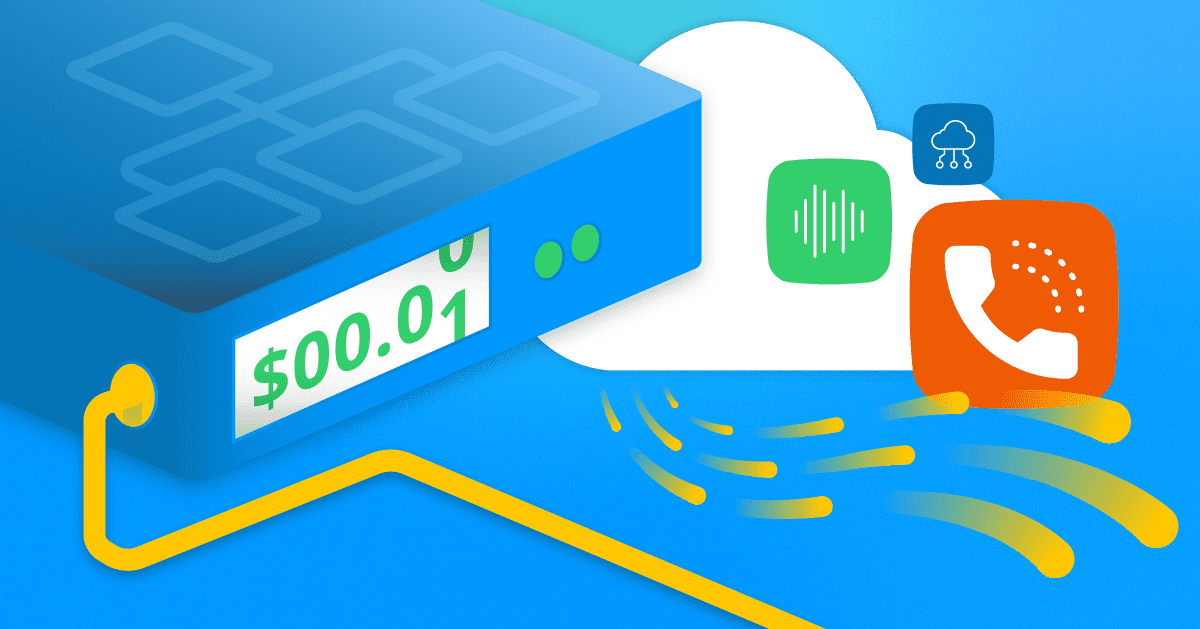Are ‘Free SIP Trunks’ Really Free?
You probably see "free SIP trunking" a lot on your VoIP communications searches. And you might be wondering how this is possible. Read on to see what part is free as well as the associated costs of using the service.

“There’s no such thing as a free lunch” is a common saying used when talking about ways to gain some freebies and curb costs. In the world of cloud communications, many carriers advertise free SIP trunks as part of their offerings. But as a business with the intention of earning revenue - and you, an international company seeking an affordable and reliable outbound solution - the question must be asked: Are free SIP trunks really free?
The short answer is yes, but the longer answer is more complex. In this article, we will break down what carriers really mean when they advertise free SIP trunking service and how it fits within your VoIP setup.
What’s a SIP trunk?
SIP stands for Session Initiation Protocol. SIP trunking is the process many businesses take to connect a PBX phone system with an ITSP (Internet Telephony Service Provider) or PSTN through VoIP service.
All working in unison through an SBC, businesses enjoy SIP trunking because it offers access to advanced call features and a lower total cost of ownership than traditional hard-wired lines. It makes it easy to terminate calls anywhere in the world while using toll free and local numbers. Other benefits of SIP trunking include:
- Simple number and call routing management
- More secure communication channels
- Boosted agent productivity
How many calls can a SIP trunk handle?
The size of a SIP trunk depends on the provider and your organization’s anticipated call volume. In short, each channel can host one phone call at a time. Call centers or other organizations that typically experience high call volumes will need more channels, more trunks and greater internet bandwidth to support each one.
Decoding the meaning of ‘free SIP trunk’
It’s true that you get what you pay for. And if a SIP trunk provider is promising free SIP service, buyer beware. While still common for even the most premium VoIP providers to advertise free SIP trunks, there’s usually a catch to it. Here’s why:
Back when phone systems were all hard-wired, adding more lines meant more cost for materials and installation involved. But now that companies can connect their on-premise or cloud phone system to the PSTN through VoIP, all lines are virtual. It’s easy and more cost-effective to add lines as needed.
To hook you in, a VoIP carrier advertising “free SIP trunking” isn’t going to charge you for the connection of your phone system to the PSTN. This is the free part of the service.
What you’re billed for are the numbers you purchase and port, the minutes and rates, and the channels required to carry out the phone calls. Makes sense, right? After all, you get what you pay for. And quality voice communications are worth paying for!
What do free SIP trunks really cost?
Again, your initial SIP trunk setup will probably cost your business nothing. The SIP to PSTN gateway connection is free. But using that connection to reach customers—and to allow them to reach you—comes with a charge.
Most SIP trunking providers bill their clients in two ways:
- Metered plan: You pay a flat monthly fee for inbound minutes plus per-minute charges for excess as well as outbound calls.
- Unmetered plan: You pay a flat monthly fee for a SIP trunk channel and unlimited calling.
The call volume your business endures will play a huge role in your overall cost. Finding the right plan helps optimize spending and better allocate resources to enhance your customer service experience. See more about optimizing SIP trunking rates in this pricing guide.
Keep in mind that if your business uses advanced call features like call recording, IVR, call analysis and call coaching, your provider may charge you extra for those services. SIP to SIP calling is truly free for businesses, but it’s not to communicate with customers and clients. This is simply for internal calls made within your organization. Calls originating from outside your PBX, or a call terminating outside your organization, will be charged.
Why the industry continues to use ‘free’ in SIP trunking
So, again - are “free SIP trunks” really free in this industry? Yes in terms of setup, no in terms of everything else. The term is used in advertising to entice companies seeking an affordable outbound calling solution compared to traditional analog network configurations.
International companies are migrating their communications to the cloud to unify their communications stack and create an omnichannel environment for their customers. SIP is a great path to do so. Add in the benefits of higher call quality and a plethora of VoIP business call features, it’s no wonder that companies worldwide have switched their on-site phone systems to cloud-based, SIP-enabled networks.
Time to optimize outbound calling and lower SIP costs
SIP trunking isn’t totally free, but the next best thing is reducing those voice costs. Talk with an AVOXI expert today and see how you can leverage our competitive rates, unlimited concurrent calling and 100-channel inclusion per SIP number (yes, really!) to better reach your customers.
